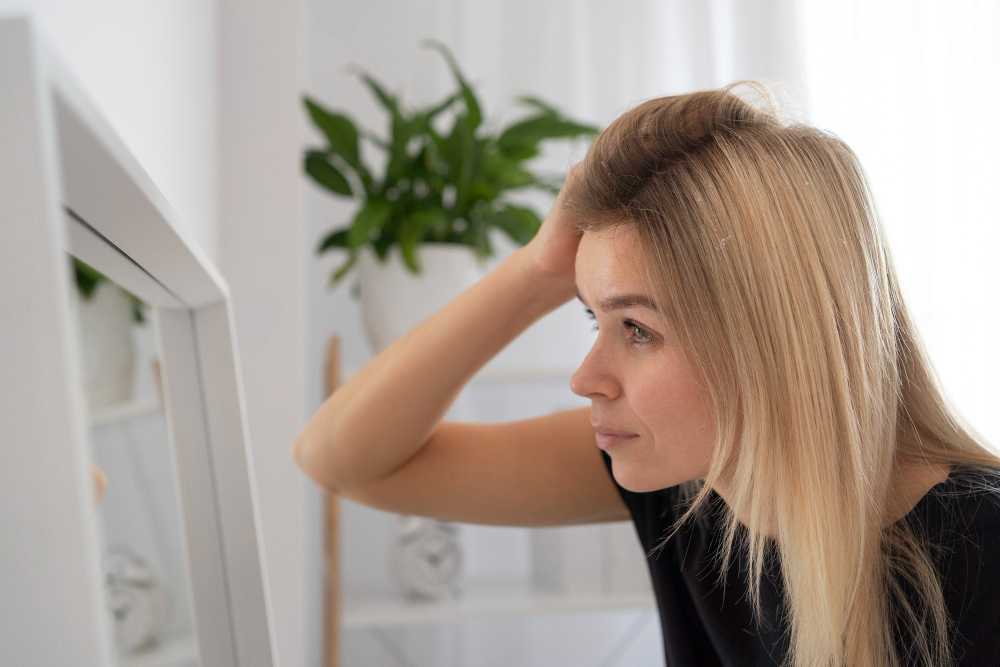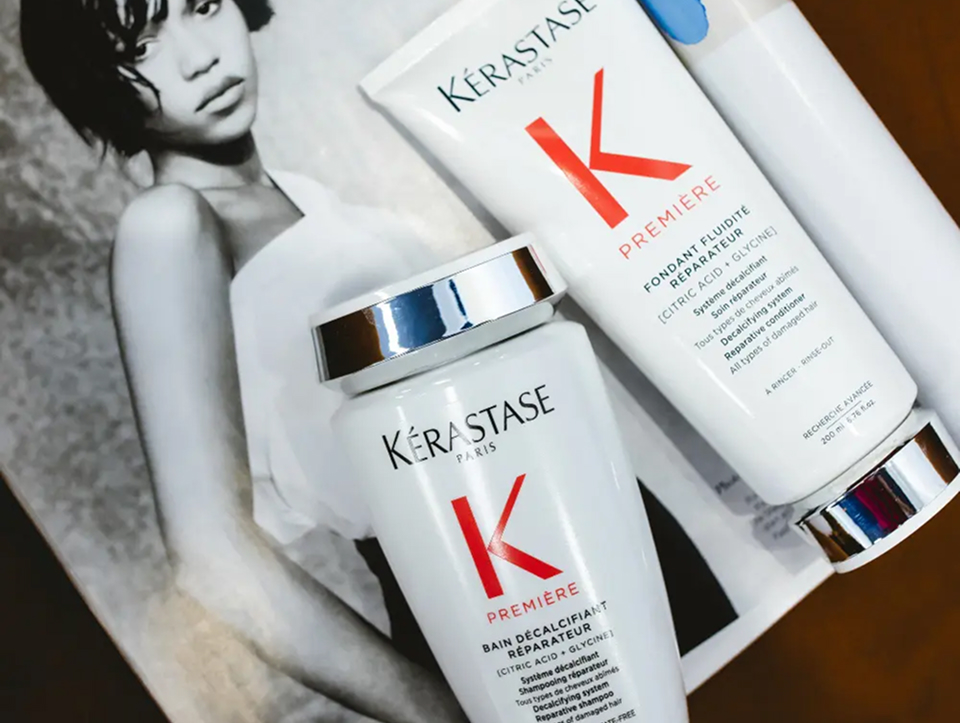Are you struggling with scalp flakes, itchiness, or greasy hair, and unsure what’s causing it?
Hence, the confusion between dandruff vs product buildup, two conditions with similar symptoms but very different causes and treatments.
Misidentifying them can lead to ineffective remedies, wasted money, and persistent scalp issues.
Understanding the difference is essential for effective scalp care.
Dandruff vs Product Buildup: What’s The Difference?
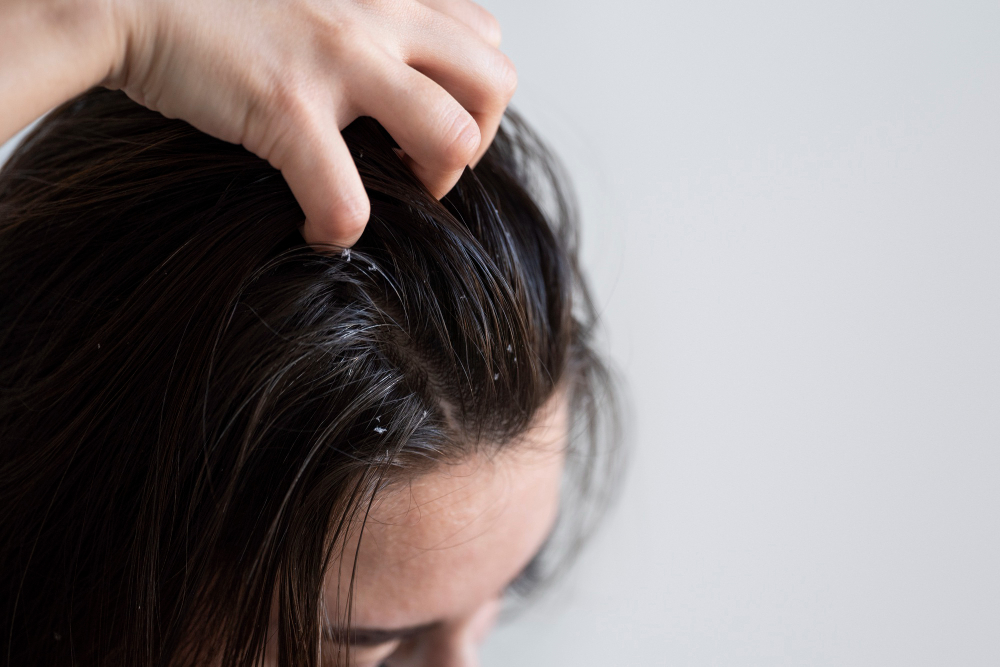
What is Dandruff?
Dandruff is a common scalp condition characterized by the shedding of dead skin cells from the scalp. It’s often accompanied by itching and can be either dry or oily.
🔬 Studies show that dandruff affects nearly 50% of adults worldwide at some point, while product buildup is one of the most common reasons for dull, heavy hair in regular haircare routines.
Causes
- Malassezia Yeast Overgrowth: This naturally occurring fungus feeds on the oils of the scalp, leading to irritation and flaking.
- Dry Skin: Cold weather or dehydration can cause the scalp to become dry and flaky.
- Oily Skin: Excess oil production can lead to seborrheic dermatitis, a more severe form of dandruff.
- Sensitivity to Hair Products: Certain shampoos or styling products can cause scalp irritation.
- Other factors, such as stress, hormonal changes, and diet, can also contribute to dandruff. Check out our article on common scalp conditions to determine if you have dandruff.

Symptoms
- Dry Dandruff: Small, white flakes with mild itching.
- Oily Dandruff: Larger, yellowish flakes with intense itching and possible scalp redness.
Treatment Options
- Medicated Shampoos: Look for ingredients such as zinc pyrithione, ketoconazole, or selenium sulfide.
- Home Remedies: Tea tree oil or apple cider vinegar rinses may help alleviate symptoms.
- Professional Treatments: Consult a dermatologist for persistent or severe cases.
🧴 For more detailed information, visit our guide on Dandruff Control.
What is Product Buildup?
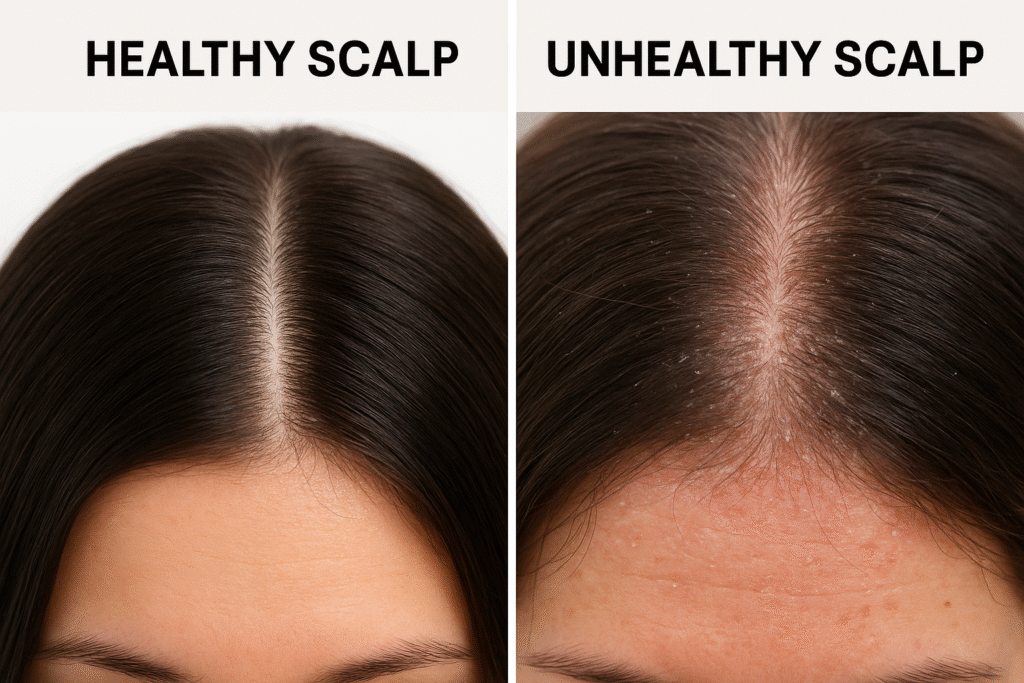
Product buildup refers to the accumulation of styling products, oils, and residues on the scalp and hair, leading to a greasy appearance and potential scalp issues.
Causes
- Overuse of Styling Products: Frequent application of gels, sprays, and leave-in conditioners can lead to residue buildup.
- Infrequent Washing: Not washing hair regularly allows products to build up on the scalp.
- Use of Non-Water-Soluble Products: Some products don’t rinse out easily, leading to buildup.
Symptoms
- Greasy Appearance: The hair appears weighed down and lacks volume.
- Itchy Scalp: Accumulated products can irritate the scalp.
- Dull Hair: Product residue can make hair appear lifeless.
Treatment Options
- Clarifying Shampoos: Use products designed to remove buildup without stripping natural oils.
- Home Remedies: Apple cider vinegar rinses can help dissolve residue.
- Regular Washing: Shampoo hair regularly to prevent accumulation.
🧴 For more information, check out our article on How to Choose the Right Dandruff Shampoo.
Key Differences Between Dandruff and Product Buildup
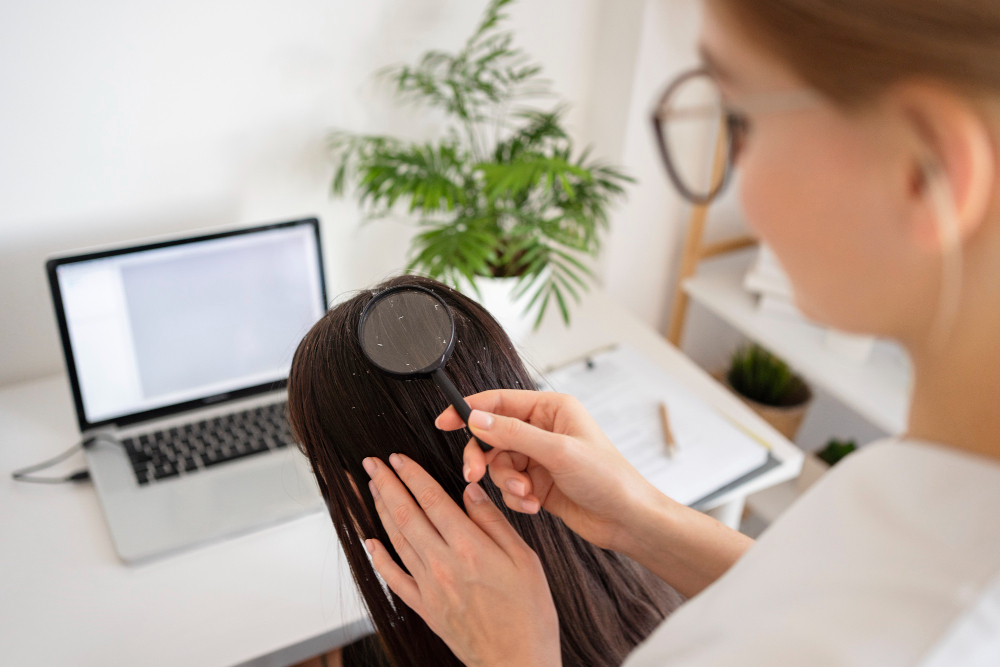
| Feature | Dandruff | Product Buildup |
| Cause | Caused by scalp conditions like seborrheic dermatitis or yeast (Malassezia) overgrowth | Caused by excess residue from styling products, oils, and hard water |
| Appearance | Dry, powdery white or yellow flakes | Waxy, sticky, or greasy residue that clings to strands |
| Scalp Feel | Itchy, irritated, sometimes inflamed | Heavy or coated feeling without inflammation |
| Flake Location | Noticeable on scalp, hairline, and shoulders | More visible on strands and near the scalp surface |
| Smell / Odor | May have a faint musty or oily odor if severe | Can have a chemical or product smell |
| Response to Washing | Persists even after washing | Improves or disappears with clarifying shampoo |
| Hair Texture | May feel dry or rough due to scalp imbalance | Hair feels slick, waxy, or flat due to residue |
| Scalp Type Commonly Affected | Oily or combination scalp types | All scalp types, especially those using heavy products |
| Main Treatment | Medicated dandruff shampoos (zinc pyrithione, ketoconazole) | Clarifying shampoos or apple cider vinegar rinses |
| Frequency of Recurrence | Chronic and can recur without maintenance | Temporary and easily prevented with routine cleansing |
| Prevention Tips | Manage oil balance, reduce stress, and maintain a healthy scalp routine | Avoid overusing products, rinse thoroughly, and exfoliate the scalp weekly |
| When to See a Professional | If flaking persists, redness spreads, or itching worsens | If buildup causes scalp acne or irritation despite regular cleansing |
🧴 For a visual comparison, visit our Dandruff vs. Dry Scalp guide.
When to Seek Professional Help
If you’re experiencing persistent symptoms or if over-the-counter treatments aren’t effective, it may be time to consult a professional.
A dermatologist or trichologist can provide a proper diagnosis and recommend appropriate treatments.
Consider booking a Scalp Therapy Service at Haste Urban Hair Spa for personalized advice.
Additional Tips for Long-Term Scalp Health

Whether dealing with dandruff, product buildup, or both, maintaining a clean, balanced scalp is key to preventing future flare-ups. Here are some dermatologist-approved tips and professional insights to keep your scalp and hair in top condition 👇
1. Wash with Intention, Not Just Habit
Overwashing or underwashing can both lead to scalp issues.
- If you have dandruff, use a medicated shampoo 2–3 times a week to control Malassezia yeast.
- If you have buildup: Incorporate a clarifying shampoo once every 1–2 weeks to remove residue and restore scalp balance.
💡 Tip: Alternate between your medicated and regular shampoo to prevent dryness or irritation.
2. Clarify Naturally with Home Remedies
Gentle, natural rinses can help reset your scalp’s pH and dissolve product film.
- Mix 1 part apple cider vinegar with two parts water and use as a post-shampoo rinse.
- Try a baking soda scrub once a month to exfoliate dead skin cells gently.
🧴 Note: Always follow with conditioner to keep hair hydrated. For oily scalps, check out How to Treat Oily Dandruff.

3. Don’t Skip Scalp Exfoliation
Just like your skin, your scalp needs exfoliation.
- Use a scalp scrub or a shampoo brush to lift flakes, oil, and residue.
- Massage gently in circular motions to stimulate circulation.
💡 Bonus: Regular exfoliation enhances shampoo effectiveness and promotes healthy hair growth.
4. Feed Your Scalp from the Inside Out
Your diet has a direct impact on scalp health.
- Eat foods rich in zinc, omega-3 fatty acids, and B vitamins, which help regulate oil production and reduce inflammation.
- Stay hydrated—dehydration can worsen dryness and flaking.
- Try adding salmon, avocados, nuts, and leafy greens to your weekly meals.
5. Manage Stress and Lifestyle Factors
Stress is a silent trigger for dandruff flare-ups.
- Incorporate relaxation techniques like yoga, meditation, or breathing exercises.
- Get 7–8 hours of quality sleep each night.

6. Consider Climate and Environment
Your scalp’s needs can change with the seasons.
- In cold or dry climates, moisturize the scalp with lightweight oils, such as jojoba or argan.
In humid areas: Focus on clarifying treatments to prevent buildup from sweat and pollution. - Environmental factors, such as hard water, can also contribute to residue. To reduce mineral deposits, consider using a filter showerhead.
7. Choose Professional Scalp Care
Sometimes, the most effective solution comes from expert hands.
- Schedule a scalp detox or consultation to analyze your scalp type and product usage.
- Professionals can recommend tailored treatments, such as exfoliating peels, hydrating serums, or micro-mist therapies.
✨ For expert scalp analysis and tailored treatments, visit Haste Urban Hair Spa.
8. Keep a Consistent Routine
Consistency is the key to lasting results.
- Stick to your chosen products for at least 3–4 weeks before switching.
- Track your scalp’s response and note any triggers (new shampoo, diet changes, stress).
📔 Maintaining a “scalp journal” can help you identify what works best for your hair type.
9. Know When It’s Time to Seek Help
Professional evaluation is the next step if flakes, redness, or buildup persist despite home care.
A scalp specialist or dermatologist can help identify:
- Seborrheic dermatitis
- Psoriasis
- Contact dermatitis
- Fungal overgrowth
Don’t wait for discomfort to escalate—book a professional scalp consultation near you to receive the right treatment plan.
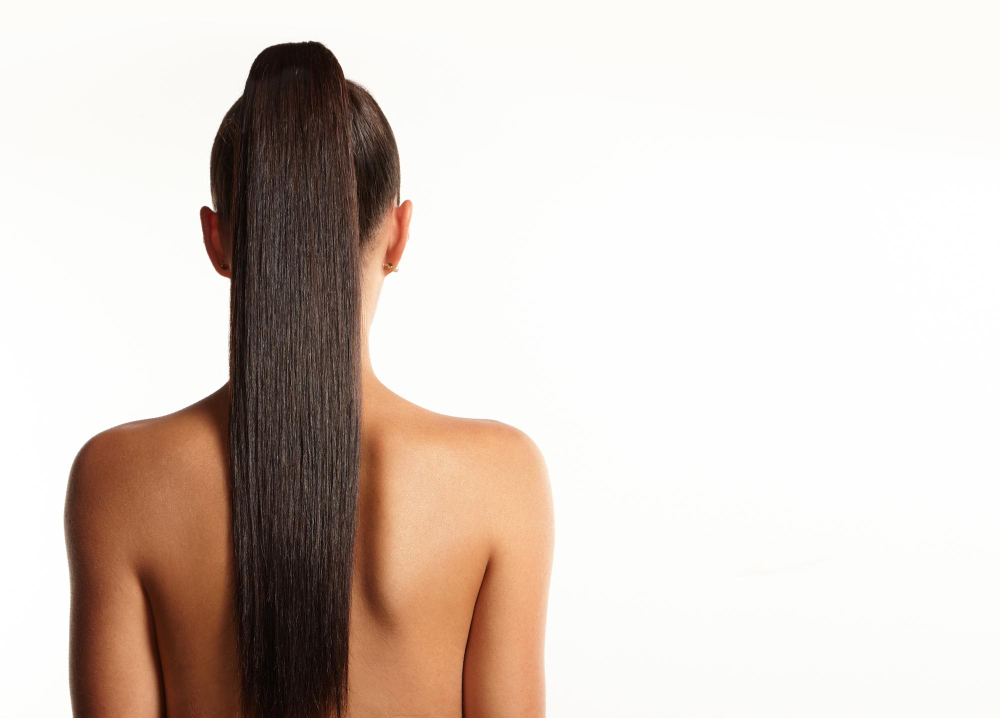
Achieving a Healthy Scalp
Understanding the differences between dandruff vs product buildup is the first step toward achieving a healthy scalp.
By identifying the root cause of your symptoms and implementing the appropriate treatments, you can restore balance to your scalp and enjoy healthy, vibrant hair.
For personalized scalp treatments and expert advice, visit Haste Urban Hair Spa. Our team is dedicated to helping you achieve your hair and scalp goals.
FAQ
How can I tell if my flakes are from dandruff or just product buildup?
If flakes are oily, yellowish, and your scalp feels inflamed, it’s likely dandruff. If they’re sticky, cling to hair shafts, and wash out with a clarifying shampoo, it’s likely due to expected product buildup.
Can product buildup cause dandruff?
Product buildup itself doesn’t directly cause dandruff, but it can trap oils and irritants that worsen scalp yeast-overgrowth, thereby contributing to dandruff conditions.
How often should I use a clarifying shampoo vs a dandruff shampoo?
For product buildup, use a clarifying shampoo about once every 1–2 weeks. For dandruff, use a medicated dandruff shampoo 2–3 times a week (or as directed) until symptoms improve.
Are heavy styling products always the cause of product buildup?
Can I treat both dandruff and product buildup simultaneously?
Yes—start by clarifying to remove residue, then switch to a dandruff-targeted shampoo and maintain a preventive regimen to manage both triggers simultaneously.

